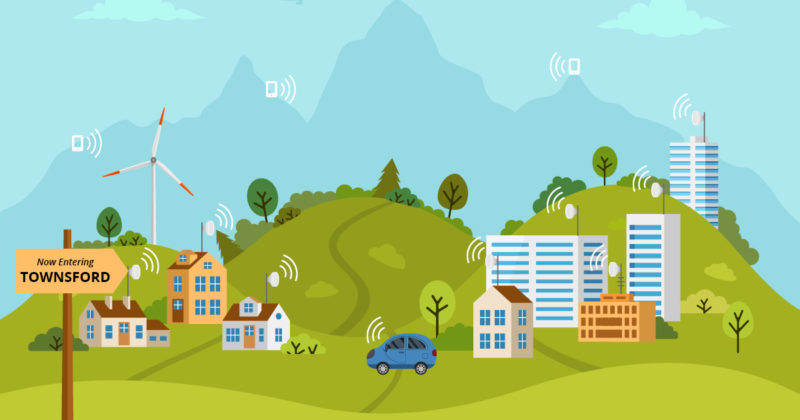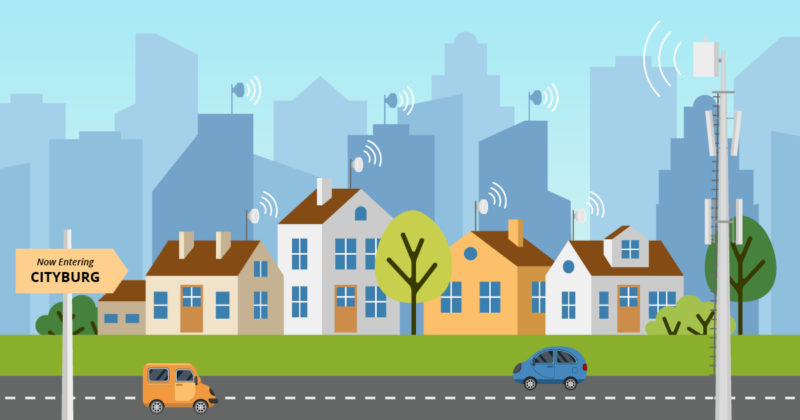How a Tailored Water Metering Solution Benefits Your Utility
Save money, shield against uncertainty, and get back to the critical work of water
By Shawn McArdle, AMI Systems Manager, Ti-SALES.

Every water utility in the country faces different challenges: two municipalities may be the same size and in the same geographic region but be balancing entirely different considerations as they evaluate different water metering solutions. While the industry shares a common goal – providing safe, clean, high-quality water to every home and business within their municipality – there is no universal best solution for how to deliver and (importantly!) measure that water.
The right water metering solution doesn’t just let a water department send out bills (though accurate, efficient billing is critical to a department’s ability to function!). It gives the utility the information they need, when they need it, to accomplish their goals while responding to their unique considerations and challenges.
Consider these two example municipalities:

- Townsford Water District serves a population of 8,000, with about 2,000 homes and businesses spread across a rural, hilly area. They’ve been using a touch-read system for the last few decades, and their meters are reaching the end of their useful life.

- The Cityburg Water Department serves 150,000 residents, with about 40,000 homes and businesses mostly concentrated around the city center and two local universities. They’ve seen high population growth in the last decade and anticipate even more growth to come. They’re ready to replace their current drive-by system, but their funding is limited – the city is balancing several priorities to support their growth.
Both Townsford and Cityburg have the same goal, but very different needs. Let’s examine the current major water metering solutions and evaluate them for each utility’s needs.
Comparing the Types of Water Metering Systems
Automated Meter Reading (AMR) Systems
An Automated Meter Reading or AMR system uses either a touch-read probe and endpoint or a radio frequency (RF) endpoint that connects to a handheld (“walk-by”) or mobile (“drive-by”) device. This system transmits water usage and alarm data to a utility staff member, who then uploads the information to a database for analysis and billing.
So, how well would an AMR water metering solution work for our two example municipalities?
- Townsford’s current solution, a touch-read AMR system, takes their meter reading staff several days each billing cycle to read every meter: many residences are strung out along twisting, hilly roads with poor visibility. Even in higher-density areas, taking each individual reading is a tedious process. Moving to a walk-by or drive-by solution would cut down the time considerably in denser areas, but still present a challenge for their most remote meter reads.
- Cityburg is currently using a drive-by AMR system, but the population growth is rapidly outpacing the utility staff’s capacity. The utility is also looking for more detailed usage information to help them keep up with demand during peak usage times; an AMR system simply isn’t enough for Cityburg anymore.
Advanced Metering Infrastructure (AMI) Systems
An Advanced Metering Infrastructure or AMI system uses a fixed network to automatically collect data at predetermined intervals without any personnel directly taking readings. The most common AMI setup uses centrally placed collectors that gather data from every meter in their range. Cellular AMI systems also exist, using the same network as our mobile phones to transmit data. With either type of AMI system, data is collected more frequently, meaning that utilities have access to far more detailed and granular use data. This lets them anticipate peak usage and flag any apparent anomalies; automated systems can detect leaks, flag potential water theft, or alert customers that they’re exceeding their predicted usage.
Let’s consider how an AMI water metering solution might look for our sample municipalities:
- Townsford’s sparsely distributed population and hilly geography means that any collector placed would only be able to pick up a small percentage of meter signals; complete coverage would require a cost-prohibitive number of collectors. While a cellular AMI system would sidestep that issue, the cellular service costs would badly strain their operating budget. Furthermore, they’re concerned that cellular technology changes far more frequently than metering technology; they don’t want to have to update their radios every few years to keep up with wireless protocols.
- Cityburg would certainly benefit from the greater amount of data an AMI system provides, both for anticipating usage and being able to provide more information to customers looking to understand their bills. The city’s density, however, is uneven – highly concentrated around their universities and city center, but patchy in neighborhoods that haven’t yet been developed. A cellular AMI solution would provide even coverage, but the service costs are prohibitively high – and they have the same concerns about wireless obsolescence as Townsford.
Smart City Metering Options
Smart cities – those incorporating Industrial Internet of Things (IIoT) technology and interconnected devices to solve problems in real time – are becoming increasingly mainstream as the technology advances. A metering solution built on IIoT technology not only provides the all the benefits of an AMI system in terms of detailed usage information, it provides a backbone for countless additional Smart City applications. Consider a water system that doesn’t just detect a water main break or a sewer overflow event – it connects to the traffic infrastructure to divert drivers away from a flooded area and send warnings to residents in the immediate area.
Would our example municipalities benefit from a Smart City water metering solution?
- Townsford simply doesn’t have the population to benefit from that high amount of data and automation – it’s just not necessary for them.
- Cityburg’s leadership can see the benefits of Smart City technology but isn’t quite ready to make that step – there are too many other priorities in the near-future budget, and the city can’t afford to wait five or ten years to upgrade its metering system.
Throwing Out the Rules: A Tailored Water Metering Solution
None of these solutions are a perfect fit for Townsford or Cityburg, but that doesn’t mean these utilities need to settle for an imperfect one. In this evolving, modern water industry, technology exists to create a tailored solution for each utility: a hybrid of different components that work together seamlessly for complete coverage, custom-fitted to specific utility goals and needs.
Let’s take another look at Townsford.

Townford’s optimal water metering solution might consist of drive-by AMR covering regions of relative population density, supplemented by select cellular AMI coverage in the most far-flung and inaccessible corners of the municipality. The cost-benefit is clear: meter reading utility staff can collect all their drive-by readings with a single efficient pass, and no longer need to spend hours on winding, narrow roads to collect just a few last readings.

A better water metering solution for Cityburg might focus on a flexible, phased AMI plan that spreads out the up-front cost of an upgrade while clearing the way for a Smart City future. Fixed network AMI collectors covering the densest areas (city center, university campuses) would provide an immediate benefit in terms of both usage data and freeing up staff for other department priorities. Choosing select components that can function with both standard AMI and Smart City technology will maximize Cityburg’s future flexibility and reduce long-term infrastructure costs – they can both realize immediate benefits and pave the way for a smart future. Importantly, their new solution must be able to work with their existing assets, giving them the freedom to migrate over an extended period.
Considerations for Choosing the Right Water Metering Solution
Having the ability to tailor a water metering solution brings the greatest benefits to municipal water utilities, but to realize the full solution benefit, keep a few considerations in mind.
First and foremost, the metering system must be both flexible to work with your specific circumstances and considerations. Your meters and endpoints must be able to function with multiple data collection methods to create a single integrated solution – this flexibility is a core requirement of a tailored solution.
Second – and this is critical – the metering system must be designed for future compatibility. Having to replace an entire system to address a sub-set of issues is an avoidable expense: choose a system that will work with all your existing assets, and you’ll preserve your initial investment. Furthermore, even with the best information and planning tools available, the future has a level of uncertainty, meaning that your needs, timeline, and budget may change dramatically before the end of a system’s useful life. A system with backward and forward compatibility protects you from uncertainty.
Finally, your metering system is the “cash register” of your utility, meaning it needs to be accurate. An accurate system maximizes department revenue, minimizes Non-Revenue Water, and enables timely, accurate billing. Both you and your customers can be confident that their bills are accurate and that every home and business is paying its fair share.
In conclusion, a properly selected tailored water metering solution – one that is flexible, future-compatible, and accurate – saves you money, shields you from uncertainty, and frees you to focus on the critical work of water.
 Shawn McArdle is the AMI Systems Manager for Ti-SALES, a leading distributor of water and wastewater supplies and the exclusive supplier for Neptune Technology Group’s line of water metering products across New England and New York. Neptune’s Tailored Water Metering Solutions help utilities to future-proof their investments with flexible, innovative solutions that work with your existing assets and never leave you stranded.
Shawn McArdle is the AMI Systems Manager for Ti-SALES, a leading distributor of water and wastewater supplies and the exclusive supplier for Neptune Technology Group’s line of water metering products across New England and New York. Neptune’s Tailored Water Metering Solutions help utilities to future-proof their investments with flexible, innovative solutions that work with your existing assets and never leave you stranded.